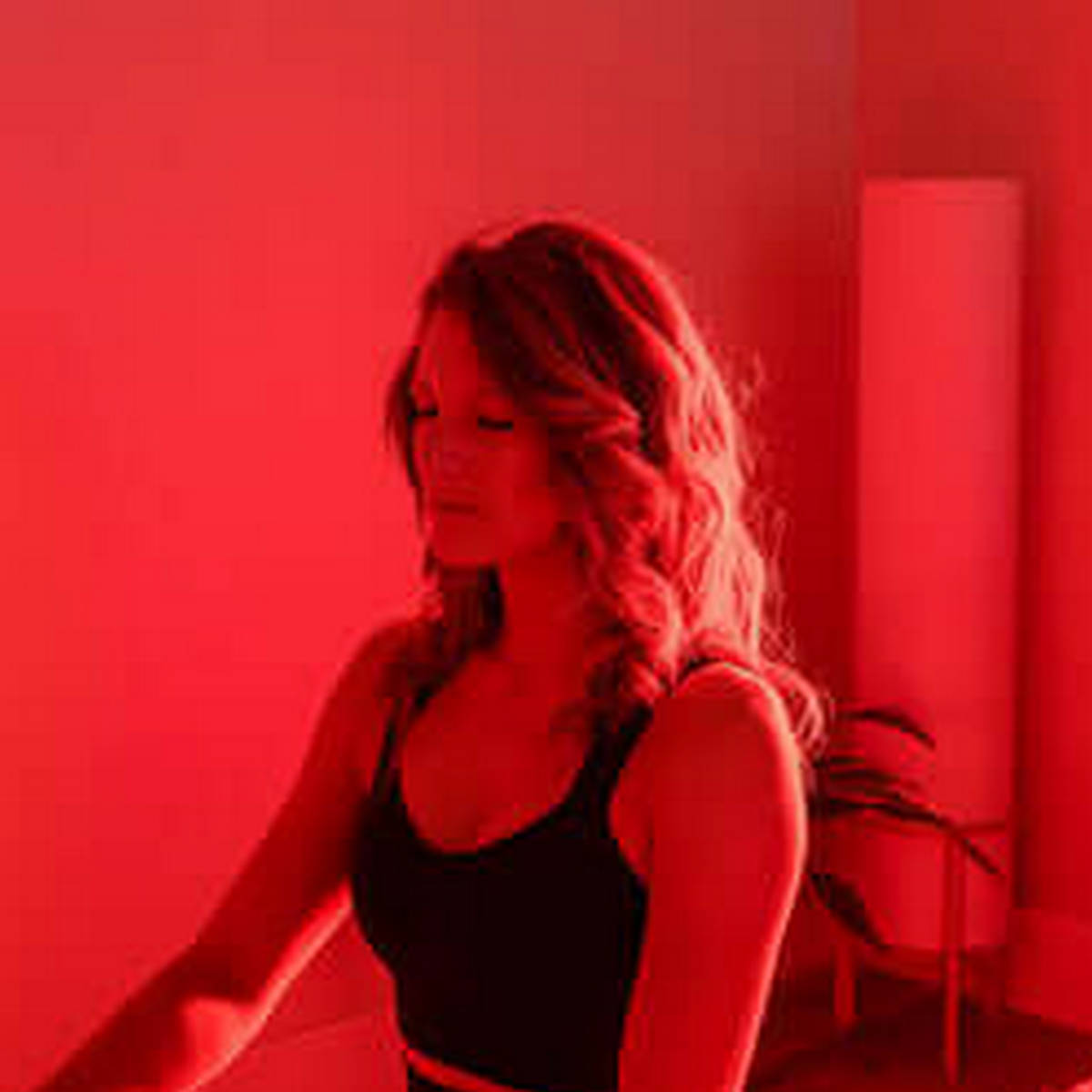Red Light Therapy
What is Red Light Therapy?




Red light therapy, also referred to as low-level light therapy (LLLT) or photobiomodulation (PBM), is a therapeutic method that utilizes specific wavelengths of red light to foster healing, diminish inflammation, and offer diverse health advantages. The procedure entails exposing the entire body or targeted areas to red or near-infrared light.
Typically employing light-emitting diodes (LEDs) or low-power lasers, red light therapy administers red or near-infrared light that permeates the skin and is assimilated by cells. This absorption triggers cellular energy production and other biological processes, enhancing the capacity of regenerative cells to repair and replicate themselves. Consequently, this facilitates the healing of the skin, bones, muscles, and connective tissues. Unlike ultraviolet (UV) light, red light does not cause skin burns.
While a warming sensation may be felt, adhering to proper usage guidelines ensures that red light therapy is safe and devoid of side effects.
At Magic City Physical Therapy, we provide medical-grade LLLT as a natural and effective means to alleviate pain. Red light therapy is not only cost-effective but also works at the cellular level to optimize cell functioning, promoting a healthier and pain- free body. In contrast to over-the-counter or prescription painkillers, red light therapy does not block pain perception; instead, it addresses cellular processes, offering relief without adverse effects.
This affordable and efficient treatment has demonstrated significant therapeutic potential in clinical trials for various conditions, including osteoarthritis, joint pain, bone fractures, muscle injuries, connective tissue disorders, nervous system disorders, and spinal issues. Red light therapy contributes to pain management, aids in injury rehabilitation, enhances joint mobility and flexibility, accelerates muscle recovery, improves athletic performance, and facilitates wound healing.
Benefits of Red Light Therapy
Enhanced Collagen Production: Collagen, a protein crucial for cellular structure in the skin and muscle tissue, plays a key role in the healing process. Red light therapy has a well-established history of promoting collagen production, benefiting both skin condition and the repair of internal tissues. This method can contribute to repairing even broken pelvic tissue through the development of a robust collagen fiber rather than relying on the formation of new bone structures. The increased collagen production not only enhances skin health, addressing wrinkles and fine lines, but it is also effective in treating skin conditions such as acne, psoriasis, and eczema.
Improved Blood Circulation: Red light therapy enhances circulation by directing oxygen-rich blood to the treated area. This heightened circulation facilitates the delivery of healing-promoting nutrients and supports increased tissue repair. The therapy stimulates vascular formation, augmenting blood flow in irradiated areas, and enables the transportation of nutrients into the bloodstream while eliminating waste products that impede the healing process.
Improved Injury Rehabilitation & Recovery: By elevating ATP production, red light therapy accelerates the healing process, thereby reducing recovery time. ATP, produced by mitochondria in cells, serves as the body’s energy source. In instances of injury, the body requires more ATP for the repair process, and red light therapy expedites its production, facilitating faster cell healing. Athletes often employ red light therapy to hasten muscle recovery post-workout, leveraging increased circulation and ATP production to prepare for subsequent exercises.
Decreased Inflammation: Red light therapy plays a pivotal role in reducing inflammation, a common response to injuries that can impede the healing process. Chronic inflammation and malfunction can cause delays in recovery, and acute inflammation, characterized by swelling, cold pain, and redness, subsides during the healing process.
Improved Cellular Health: Stimulating collagen production, enhancing skin elasticity, and fortifying hair, red light therapy contributes to overall cellular health. It aids in connective tissue health by minimizing inflammation, repairing damaged cells, and augmenting blood flow. Additionally, the therapy improves circulation, delivering increased oxygen and nutrients to cells, resulting in overall cellular and bodily health.
Pain Reduction: Red light therapy alleviates joint stiffness and soreness by decreasing inflammation, enhancing blood flow, and reducing muscle spasms. Studies have demonstrated the effectiveness of red light therapy in reducing pain associated with conditions like arthritis, fibromyalgia, and other chronic pain conditions.
Enhanced Sleep Quality: Red light therapy is recognized for its positive impact on sleep by aiding in the regulation of our circadian rhythm.
Improved Mental Wellness: Red light therapy contributes to enhanced mental well-being, both in daily life and during stressful periods. Scientific evidence supports its ability to elevate serotonin and dopamine levels. Studies in psychiatry indicate that the release of melanopsin, a red light-sensitive receptor, has mood- lifting effects, thereby promoting increased self-esteem. Notably, melanopsin’s natural production in brain cells contributes to its antidepressant effects.
Additional research demonstrates that exposure to bright red light has proven benefits in reducing anxiety, alleviating pain, lowering heart rate, and enhancing cognitive function.
Boosted Metabolism: Red light therapy plays a role in boosting metabolism. In situations where the body experiences an oxygen and nutrient deficit, it compensates by increasing metabolism. By improving circulation, red light therapy activates the body’s metabolic system, enhancing oxygen delivery to muscles and promoting muscle movement. Increased blood flow not only energizes the muscles for better performance but also contributes to an overall sense of well- being. This is particularly advantageous for individuals dealing with chronic pain, as regular movement aids in pain alleviation.
Types of Pain Treated by Red and NIR Light Therapy
Whether they’re used separately or together, red light therapy and near-infrared
light therapy are incredibly versatile treatments that provide targeted pain relief for a variety of painful ailments seen by physical therapists. Whether employed independently or in conjunction, red light therapy and near- infrared light therapy stand out as highly adaptable treatments, offering targeted relief for an array of painful conditions commonly encountered by physical therapists.
Joint Pain
Red light therapy combats joint pain by diminishing inflammation, enhancing blood circulation, and stimulating collagen synthesis. Studies, such as a 2011 publication, demonstrate the efficacy of Red/NIR light therapy in reducing joint pain. In this specific study focusing on sacroiliac joint pain, participants underwent 10 sessions of 830nm near-infrared light therapy over five weeks, resulting in significant improvement in pain scores and increased trunk mobility for two-thirds of the participants.
Osteoarthritis
Osteoarthritis, a degenerative joint disorder stemming from joint wear and tear, affects around 32.5 million Americans across various age groups. Red and NIR light therapy address the root cause of this disease—inflammation. Consistent treatments have been shown to reduce osteoarthritis pain and can even enhance mobility when combined with exercise.
Carpal Tunnel Syndrome
The painful condition of carpal tunnel syndrome, characterized by wrist pressure on the median nerve leading to hand pain, tingling, and numbness, finds relief through red light therapy. Studies indicate that this therapy provides short-term pain relief, likely attributed to its ability to target inflammation and improve blood circulation
in affected areas.
Rheumatoid Arthritis
Red light therapy, with its anti-inflammatory effects, emerges as a promising treatment for rheumatoid arthritis—an autoimmune disease causing joint pain, inflammation, stiffness, and reduced mobility. A controlled 2005 study by researchers at the University of Ottawa revealed a 70% reduction in rheumatoid arthritis pain among participants who underwent red light therapy compared to the placebo group. The therapy also resulted in decreased morning stiffness and increased palm flexibility.
Bursitis
Commonly associated with high-impact athletic activities like running, bursitis involves inflammation of the bursa, fluid-filled sacs between tendons and bones in the outer hip joint. Red light therapy accelerates healing by alleviating swelling in treated areas.
Chronic Pain
Persistent pain lasting over six months, encompassing conditions like frequent headaches, low backaches, arthritis, fibromyalgia, and nerve damage, is classified as chronic. Red light therapy offers relief by reducing inflammation and increasing the production of blood cells and cellular energy.
Neck and Back Pain
Whether arising from poor sleep, sports injuries, or accidents, neck and back pain, often rooted in inflammation, find targeted relief through red light therapy.
Consistent use has been shown to enhance range of motion and alleviate pain, as demonstrated in a 2006 study that found near-infrared and infrared therapy effectively reduced chronic low back pain.
Red light therapy emerges as a promising treatment for a diverse range of conditions, from osteoarthritis to chronic pain. If you are experiencing any of the aforementioned conditions, consult with your Magic City therapist to explore the potential suitability of our red light therapy for your specific needs.
References
1. “Red Light Therapy.” Mayo Clinic, Rochester, MN. Accessed March 05, 2018.
https://www.mayoclinic.org/tests-procedures/red-light-therapy/about/pac-20385151
2. Whelan, HT, Smits, JL, Buchfuhrer, MJ. “Efficacy of red and near-infrared light treatment in
reducing wrinkles: a systematic review.” J Biomed Opt. (2017): 014009. Accessed February 22, 2024. https://www.ncbi.nlm.nih.gov/pubmed/28786387.
3. Ohkuin I, Ushigome N, Harada T, et al. Low level laser therapy (LLLT) for patients with
sacroiliac joint pain. Laser Ther. 2011;20(2):117-121. doi:10.5978/islsm.20.117
4. Brosseau L, Welch V, Wells G, deBie R, Gam A, Harman K, Morin M, Shea B, Tugwell P. Low level
laser therapy (classes I, II and III) in the treatment of rheumatoid arthritis. Cochrane Database Syst Rev. 2000;(2):CD002049. doi: 10.1002/14651858.CD002049. Update in: Cochrane Database Syst Rev. 2005;(4):CD002049. PMID: 10796462.
5. Gale GD, Rothbart PJ, Li Y. Infrared therapy for chronic low back pain: a randomized,
controlled trial. Pain Res Manag. 2006;11(3):193-196. doi:10.1155/2006/876920
6. “Red Light Therapy.” National Center for Biotechnology Information. U.S. National Library of
Medicine, 01 August 2017. Accessed March 05, 2018.
https://www.ncbi.nlm.nih.gov/pubmed/28767022. Accessed February 22, 2024.
